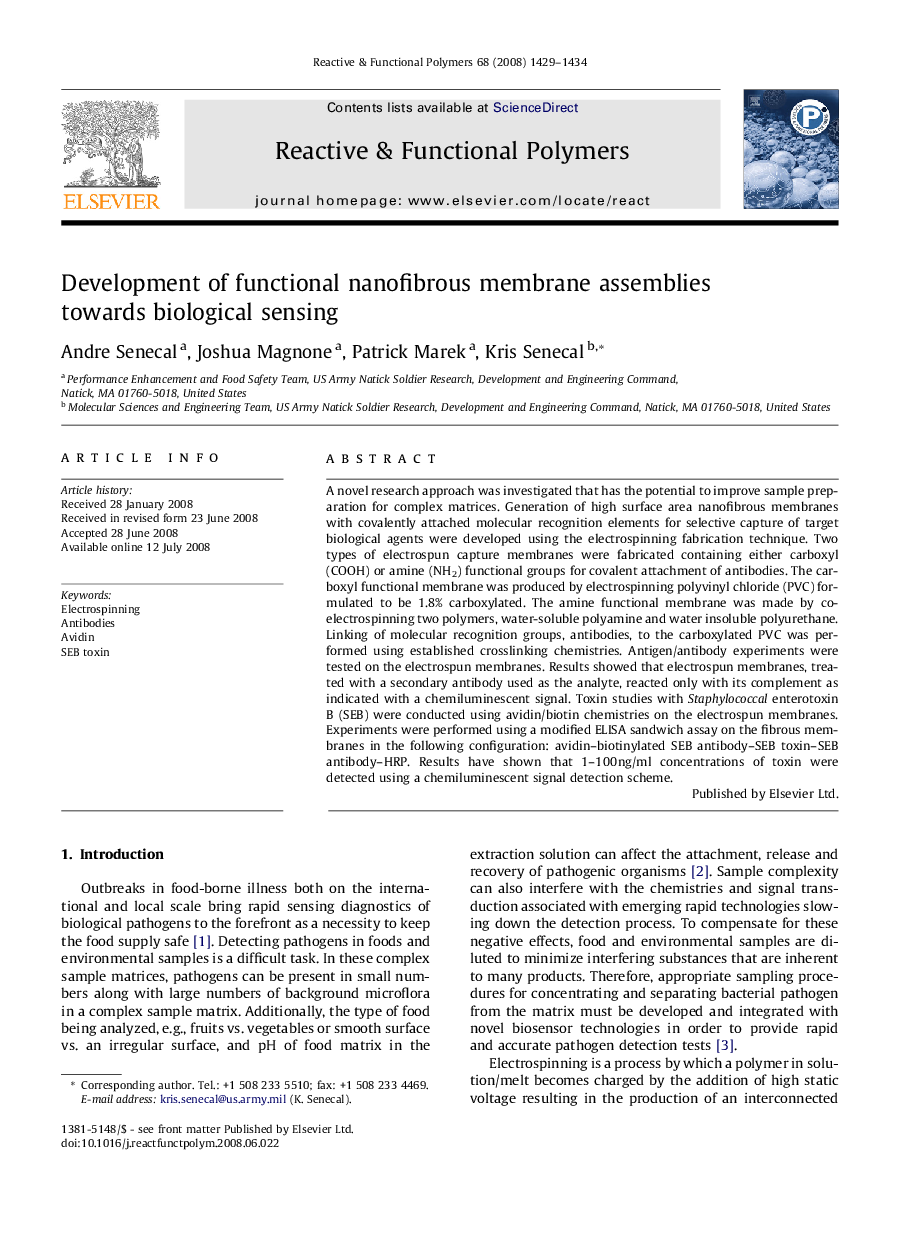| Article ID | Journal | Published Year | Pages | File Type |
|---|---|---|---|---|
| 5211401 | Reactive and Functional Polymers | 2008 | 6 Pages |
Abstract
A novel research approach was investigated that has the potential to improve sample preparation for complex matrices. Generation of high surface area nanofibrous membranes with covalently attached molecular recognition elements for selective capture of target biological agents were developed using the electrospinning fabrication technique. Two types of electrospun capture membranes were fabricated containing either carboxyl (COOH) or amine (NH2) functional groups for covalent attachment of antibodies. The carboxyl functional membrane was produced by electrospinning polyvinyl chloride (PVC) formulated to be 1.8% carboxylated. The amine functional membrane was made by co-electrospinning two polymers, water-soluble polyamine and water insoluble polyurethane. Linking of molecular recognition groups, antibodies, to the carboxylated PVC was performed using established crosslinking chemistries. Antigen/antibody experiments were tested on the electrospun membranes. Results showed that electrospun membranes, treated with a secondary antibody used as the analyte, reacted only with its complement as indicated with a chemiluminescent signal. Toxin studies with Staphylococcal enterotoxin B (SEB) were conducted using avidin/biotin chemistries on the electrospun membranes. Experiments were performed using a modified ELISA sandwich assay on the fibrous membranes in the following configuration: avidin-biotinylated SEB antibody-SEB toxin-SEB antibody-HRP. Results have shown that 1-100Â ng/ml concentrations of toxin were detected using a chemiluminescent signal detection scheme.
Keywords
Related Topics
Physical Sciences and Engineering
Chemistry
Organic Chemistry
Authors
Andre Senecal, Joshua Magnone, Patrick Marek, Kris Senecal,
